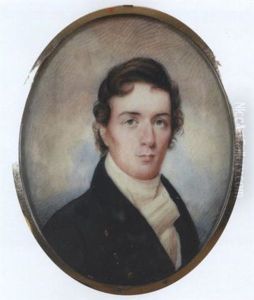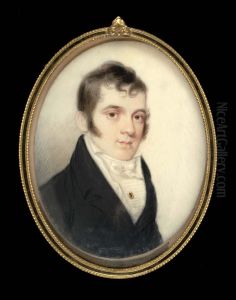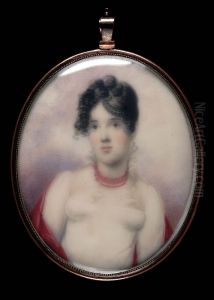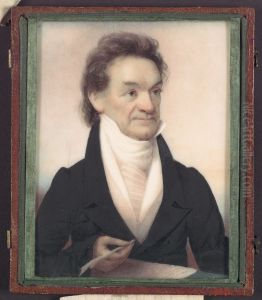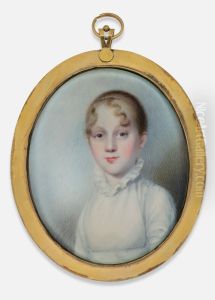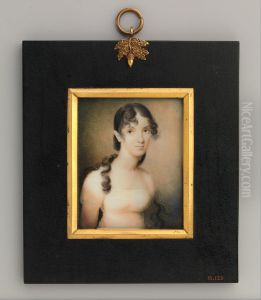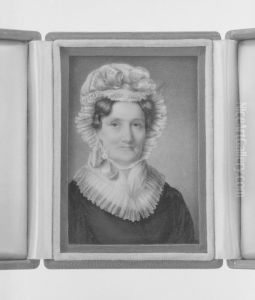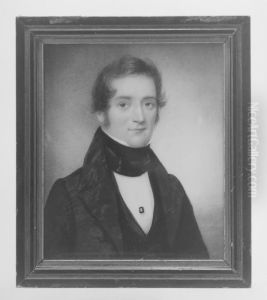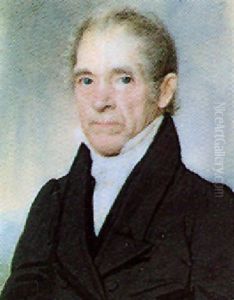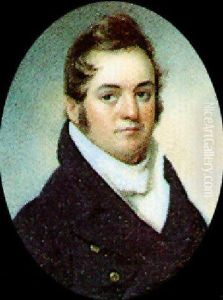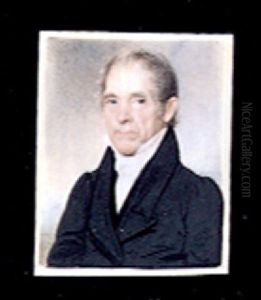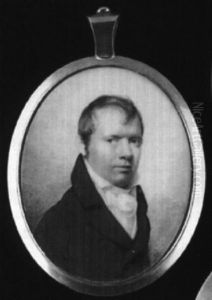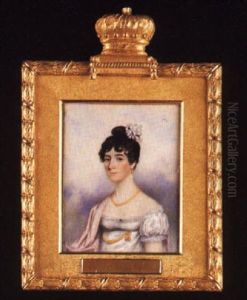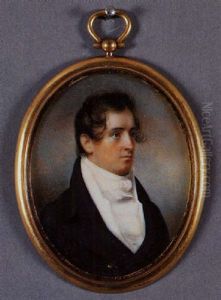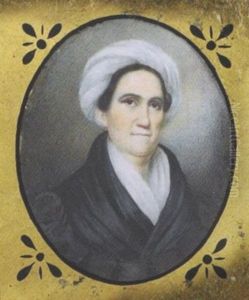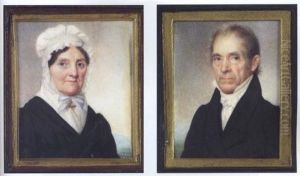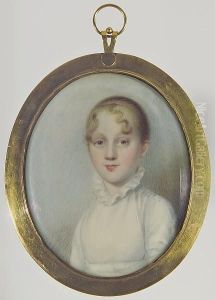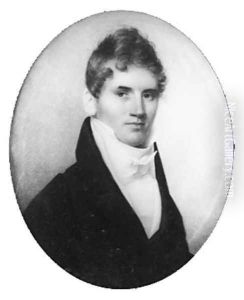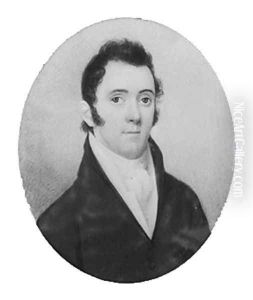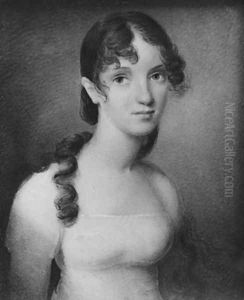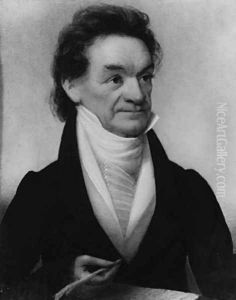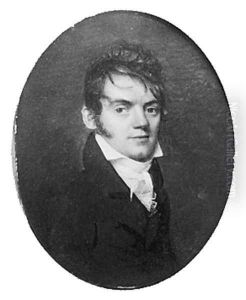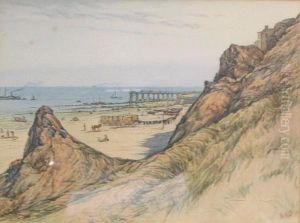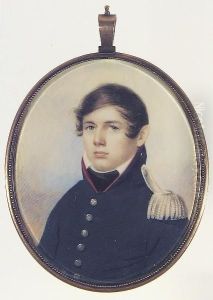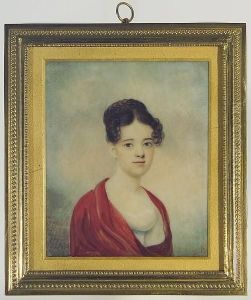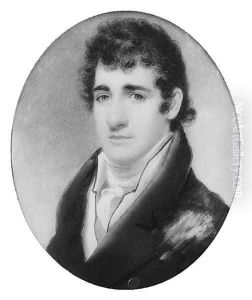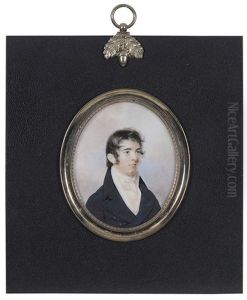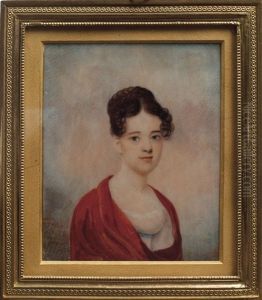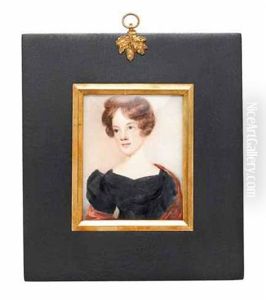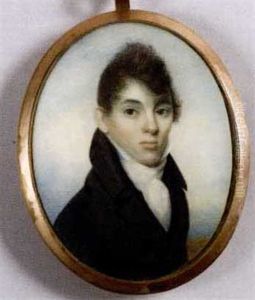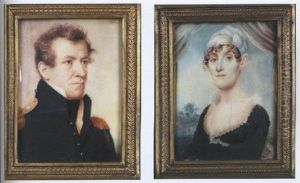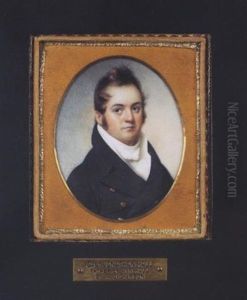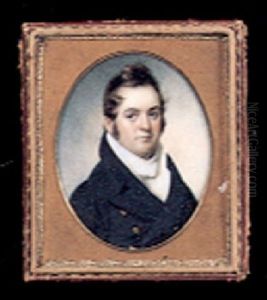Anson Dickinson Paintings
Anson Dickinson was an American painter known primarily for his work as a miniaturist during the late 18th and early 19th centuries. Born on April 19, 1779, in Milton, Connecticut, Dickinson grew up in a time when the newly independent United States was establishing its cultural and artistic identity. He began his career as an itinerant artist, traveling from town to town to paint portraits for those who could afford his services. This practice was common among artists of his time, as it allowed them to reach a broader clientele.
Dickinson's miniature portraits were highly sought after for their exquisite detail and the skill with which he captured the likenesses and personalities of his subjects. His work provides a valuable glimpse into the fashion, hairstyles, and aesthetics of the early American republic.
Throughout his career, Dickinson adapted to the changing tastes and technologies of the time. He transitioned from painting miniatures on ivory to using watercolors on paper, a change partly necessitated by the scarcity of ivory and the evolution of personal tastes towards larger, less costly portraits. Despite the change in medium, his skill and popularity did not wane.
Dickinson's legacy includes hundreds of miniatures that are now part of collections in major museums across the United States, including the Metropolitan Museum of Art and the Smithsonian American Art Museum. These pieces not only serve as historical documents but also as testaments to the skill and artistry of one of America's early master miniaturists.
He died on March 14, 1852, leaving behind a body of work that continues to be studied and admired for its beauty and historical significance. Dickinson's contributions to American art history are particularly notable for his role in the development of the miniature portrait genre in the United States, making him an important figure in the country's early artistic heritage.
